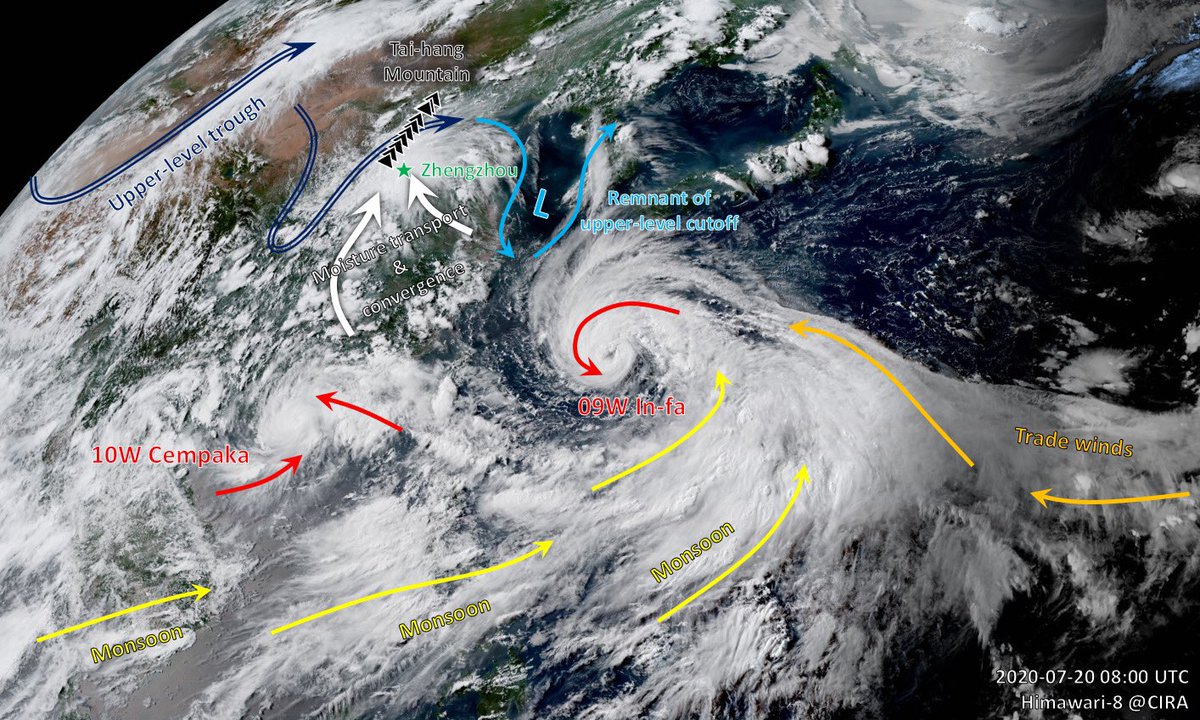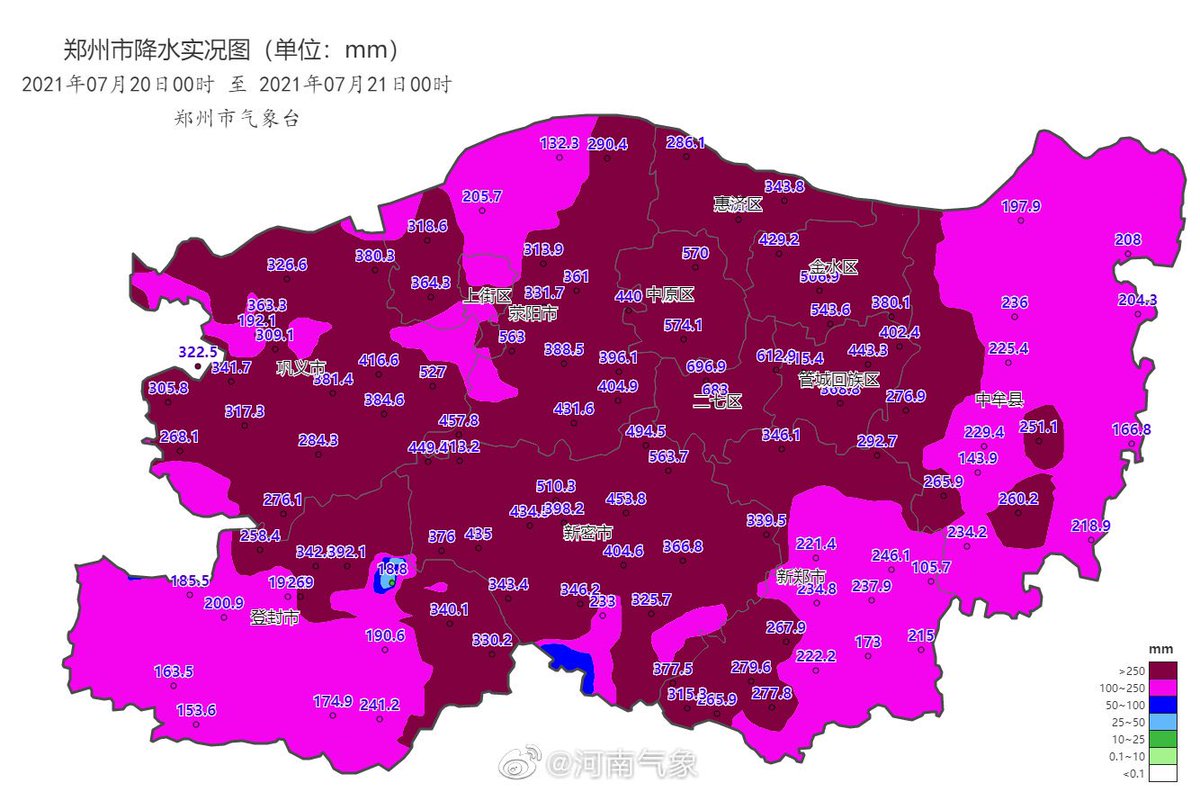
ECMWF ensembles showing the Fujiwhara effect between Typhoon #Cempaka 🌼 and Typhoon #Infa 🎆 as the two storms were forecasted to move around each other 🌀 

That is one big monsoon gyre circulation over the northwest Pacific, formed by converging easterly trade winds and westerly monsoons. It gave birth to #Cempaka and #Infa. It might give birth to more typhoons. 

Typhoon #In-fa has an eye in formation this morning (meaning: "fireworks" in Cantonese 🎆 name origin: Macao). Improving structure despite some dry air issues. #In-fa is forecasted to detach from its monsoon "tail" and continue to intensify while moving towards Taiwan.
#Cempaka has been nearly stationary just offshore of Guangdong with a midget core and well-defined eye. Increasing "Fujiwhara drag" from #Infa is about to pull it into a counter-clockwise loop. (#Cempaka meaning: a type of tree with fragrant flowers 🌼 name origin: Malaysia)
• • •
Missing some Tweet in this thread? You can try to
force a refresh









